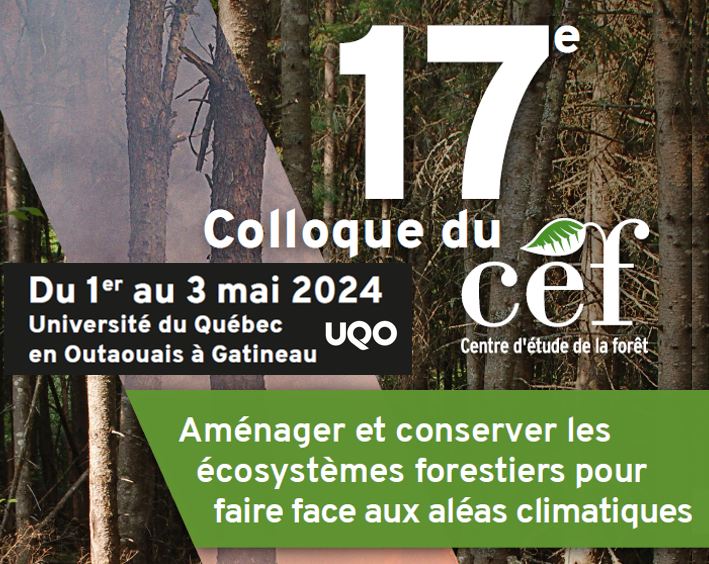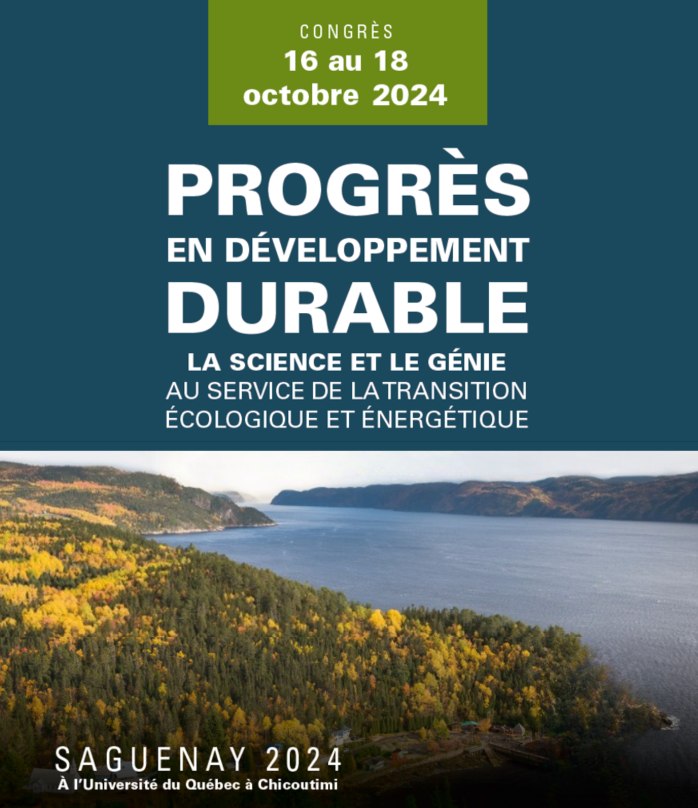
Lael Parrott
Membre associé
Modélisation, simulation et analyse de systèmes écologiques complexes
Associate Professor, Sustainability
Irving K Barber School of Arts and Sciences
Earth & Environmental Sciences and Biology Units
The University of British Columbia | Okanagan Campus
3333 University Way
Kelowna, BC, Canada, V1V 1V7
Phone 250 807 8122
FORMATION
- Ph.D. Biosystems Engineering, 2000 (McGill University)
- M.Sc. Biosystems Engineering, 1995 (McGill University)
- B.Sc. Agricultural Engineering, 1994 (McGill University)
THÈMES DE RECHERCHE
We study ecosystems and landscapes as complex systems, building models that can help us to better understand the interconnectedness of humans and their environment. We are affiliated with the UBC Okanagan Institute for Biodiversity, Resilience, and Ecosystem Services (BRAES).
We typically work at the scale of regional landscapes. We view landscapes as complex mosaics of interacting components, linked via processes occuring across multiple scales of space and time. Our approach is systems oriented, acknowledging that all parts of a landscape are interconnected. We work in marine, coastal and terrestrial environments.
Applications of our research include future scenario building, development of decision-support tools for multi-objective ecosystem management and the creation of new complexity-based ecological indicators. We work in close collaboration with non-academic partners from government and industry sectors. Pour de plus amples informations, veuillez consulter le site web du laboratoire de systèmes complexes à http://complexity.ok.ubc.ca/ ![]()
Vous pouvez télécharger toutes mes références bibliographiques en format BibTeX, BibTeX-CSV ou EndNote
PUBLICATIONS
Livres
Aucun
Chapitres de livre
- Parrott, L., Lange, H. (2013) An Introduction to Complexity Science. In Managing Forests as Complex Adaptive Systems - Building Resilience to the Challenge of Global Change. (Messier, C., Puettmann, K.J. and Coates, D.K., Eds.) Routledge
- Parrott, L. (2008) Ecological Informatics: Adaptive Agents. In Encyclopedia of Ecology. (Jørgensen, S.E. and Fath, B., Eds.) Oxford: Elsevier, pages 47-51
Livres, numéros spéciaux et actes de colloques publiés à titre d'éditeur
Aucun
Articles révisés par un comité de lecture
- Puettmann, K.J., Parrott, L., Messier, C. (2016) Teaching Complex Adaptive Systems Science in Natural Resource Management: Examples from Forestry. Natural Sciences Education, 45(1)
- Messier, C., Puettmann, K., Chazdon, R., Andersson, K.P., Angers, V.-A., Brotons, L., Filotas, E., Tittler, R., Parrott, L., Levin, S.A. (2015) From Management to Stewardship: Viewing Forests As Complex Adaptive Systems in an Uncertain World. Conservation Letters, 8(5):368-377
- Filotas, E., Parrott, L., Burton, P.J., Chazdon, R.L., Coates, D.K., Coll, L., Haeussler, S., Martin, K., Nocentini, S., Puettmann, K.J. et al. (2014) Viewing forests through the lens of complex systems science. Ecosphere, 5(1):art1-
- Parrott, L., Chion, C., Gonzales, R., Latombe, G. (2012) Agents, individuals, and networks: Modeling methods to inform natural resource management in regional landscapes. Ecology and Society, 17(3):--32
- Parrott, L., Meyer, W.S. (2012) Future landscapes: Managing within complexity. Frontiers in Ecology and the Environment, 10(7):382-389
- Mellin, C., Parrott, L., Andrefouet, S., Bradshaw, C.J.A., MacNeil, M.A., Caley, M.J. (2012) Multi-scale marine biodiversity patterns inferred efficiently from habitat image processing. Ecological Applications, 22(3):792-803
- Gonzales, R., Parrott, L. (2012) Network Theory in the Assessment of the Sustainability of Social-Ecological Systems. Geography Compass, 6(2):76-88
- Parrott, L. (2012) The Ubiquitous Dynamics of Complex Systems. BioScience, 62(6):607-608
- Kulkarni, A., Marwan, N., Parrott, L., Proulx, R., Webber Jr, C.L. (2011) Editorial. International Journal of Bifurcation and Chaos, 21(4):997-1001
- Chion, C., Lamontagne, P., Turgeon, S., Parrott, L., Landry, J.-A., Marceau, D.J., Martins, C.C.A., Michaud, R., Menard, N., Cantin, G. et al. (2011) Eliciting cognitive processes underlying patterns of human-wildlife interactions for agent-based modelling. Ecological Modelling, 222(14):2213-2226
- Andersen, J.V., Nowak, A., Rotundo, G., Parrott, L., Martinez, S. (2011) "Price-quakes" shaking the world's stock exchanges. PLOS ONE, 6(11):e26472
- Parrott, L., Chion, C., Martins, C.C.A., Lamontagne, P., Turgeon, S., Landry, J.A., Zhens, B., Marceau, D.J., Michaud, R., Cantin, G. et al. (2011) A decision support system to assist the sustainable management of navigation activities in the St. Lawrence River Estuary, Canada. Environmental Modelling and Software, 26(12):1403-1418
- Latombe, G., Parrott, L., Fortin, D. (2011) Levels of emergence in individual based models: Coping with scarcity of data and pattern redundancy. Ecological Modelling, 222(9):1557-1568
- Parrott, L. (2011) Hybrid modelling of complex ecological systems for decision support: Recent successes and future perspectives. Ecological Informatics, 6(1):44-49
- Anand, M., Gonzalez, A., Guichard, F., Kolasa, J., Parrott, L. (2010) Ecological Systems as Complex Systems: Challenges for an Emerging Science. Diversity, 2(3):395-410
- Filotas, E., Grant, M., Parrott, L., Rikvold, P.A. (2010) The effect of positive interactions on community structure in a multi-species metacommunity model along an environmental gradient. Ecological Modelling, 221(6):885-894
- Filotas, E., Grant, M., Parrott, L., Rikvold, P.A. (2010) Positive interactions and the emergence of community structure in metacommunities. Journal of Theoretical Biology, 266(3):419-429
- Botin, Z.T., David, L.T., del Rosario, R.C.H., Parrott, L. (2010) Spatio-temporal complexity analysis of the sea surface temperature in the Philippines. Ocean Science, 6(3):933-947
- Parrott, L. (2010) Measuring ecological complexity. Ecological Indicators, 10(6):1069-1076
- Gonzales, R., Cardille, J.A., Parrott, L., Gaudreau, C., Deest, G. (2009) SFMN GeoSearch: An interactive approach to the visualization and exchange of point-based ecological data. Ecological Informatics, 4(4):196-205
- Juge, C., Champagne, A., Coughlan, A.P., Juge, N., Parrott, L., Piche, Y. (2009) Quantifying the growth of arbuscular mycorrhizal fungi: usefulness of the fractal dimension. Botany, 87(4):387-400
- Proulx, R., Parrott, L. (2009) Structural complexity in digital images as an ecological indicator for monitoring forest dynamics across scale, space and time. Ecological Indicators, 9(6):1248-1256
- Proulx, R., Cote, P., Parrott, L. (2009) Multivariate recurrence plots for visualizing and quantifying the dynamics of spatially extended ecosystems. Ecological Complexity, 6(1):37-47
- Proulx, R., Cote, P., Parrott, L. (2008) Use of recurrence analysis to measure the dynamical stability of a multi-species community model. European Physical Journal-Special Topics, 164:117-126
- Parrott, L., Proulx, R., Thibert-Plante, X. (2008) Three-dimensional metrics for the analysis of spatiotemporal data in ecology. Ecological Informatics, 3(6):343-353
- Proulx, R., St-Laurent, M.-H., Parrott, L. (2008) Emergent phenotypes: Association between morphology and coloration in fish. Evolutionary Ecology Research, 10(7):1037-1050
- Filotas, E., Grant, M., Parrott, L., Rikvold, P.A. (2008) Community-driven dispersal in an individual-based predator-prey model. Ecological Complexity, 5(3):238-251
- Proulx, R., Parrott, L. (2008) Measures of structural complexity in digital images for monitoring the ecological signature of an old-growth forest ecosystem. Ecological Indicators, 8(3):270-284
- Anwar, M., Jeanneret, C., Parrott, L., Marceau, D. (2007) Conceptualization and implementation of a multi-agent model to simulate whale-watching tours in the St. Lawrence estuary in Quebec, Canada. Environmental Modelling and Software, 22(12):1775-1787
- Cote, P., Parrott, L., Sabourin, R. (2007) Multi-objective optimization of an ecological assembly model. Ecological Informatics, 2:23-31
- Arii, K., Derome, R., Parrott, L. (2007) Examining the potential effects of species aggregation on the network structure of food webs. Bulletin of Mathematical Biology, 69(1):119-133
- Thibert-Plante, X., Parrott, L. (2007) Prisoner’s Dilemma and Clusters on Small-World Networks. Complexity, 12:22-36
- Cote, P., Parrott, L. (2006) Controlling food web structure by optimization of a community assembly model. Ecological Informatics, 1(2):125-131
- MacVicar, B. J., Parrott, L., Roy, A.G. (2006) A two-dimensional discrete particle model of gravel bed river systems. Journal of Geophysical Research: Earth Surface, 111(F3):-
- Arii, K., Parrott, L. (2006) Examining the colonization process of exotic species varying in competitive abilities using a cellular automaton model. Ecological Modelling, 199(3):219-228
- Parrott, L. (2005) Quantifying the complexity of simulated spatiotemporal population dynamics. Ecological Complexity, 2(2):175-184
- Parrott, L. (2004) Analysis of simulated long-term ecosystem dynamics using visual recurrence analysis. Ecological Complexity, 1(2):111-125
- Parrott, L., Lange, H. (2004) Use of interactive forest growth simulation to characterise spatial stand structure. Forest Ecology and Management, 194(1-3):29-47
- Arii, K., Parrott, L. (2004) Emergence of non-random structure in local food webs generated from randomly structured regional webs. Journal of Theoretical Biology, 227(3):327-333
- Parrott, L., Lacroix, R., Wade, K.M. (2003) Design considerations for the implementation of multi-agent systems in the dairy industry. Computers and Electronics in Agriculture, 38(2):79-98
- Parrott, L., Kok, R. (2002) A generic, individual-based approach to modelling higher trophic levels in simulation of terrestrial ecosystems. Ecological Modelling, 154(1-2):151-178
- Parrott, L. (2002) Complexity and the limits of ecological engineering. Transactions of the ASAE, 45(5):1697-1702
- Parrott, L., Kok, R. (2001) A generic primary producer model for use in ecosystem simulation. Ecological Modelling, 139(1):75-99
- Parrott, L., Kok, R. (2000) Incorporating complexity in ecosystem modelling. Complexity International, 7:19
- Parrott, L., Kok, R., Lacroix, R. (1996) Daily average temperatures: Modeling and generation with a Fourier transform approach. Transactions of the ASAE, 39(5):1911-1922
Articles publiés dans des actes de colloque (proceedings)
- Rikvold, P.A., Filotas, E., Grant, M., Parrott, L. (2011) Mutualistic Interactions and Community Structure in Biological Metacommunities. In APS Meeting Abstracts. Page 44014
- Latombe, G., Parrott, L., Fortin, D. (2011) Système d’aide à la décision pour étudier les effets de la structure du paysage sur la dynamique des populations du caribou forestier, de l’orignal et du loup en forêt boréale. In Actes du colloque «le caribou forestier : un enjeu de biodiversité et de développement durable.». Pages 121-123. Ministère des Ressources naturelles et de la Faune
- Parrott, L. (2009) Understanding and managing the landscape as a complex system: What can bottom-up modelling approaches contribute? In Proceedings of the Surveying & Spatial Sciences Institute Biennial International Conference. Adelaide. (Ostendorf, B., Baldock, P., Bruce, D., Burdett, M. and Corcoran, P., Eds.) Pages 1095-1111. Surveying & Spatial Sciences Institute
- McClure, M., Gervais, D.J., Morcos, L., Parrott, L., Despland, E. (2009) Individual interactions to collective cooperation in the forest tent caterpillar (Malacosoma disstria). In Proceedings of Cognitio 2007. (Cambridge Scholar Press Ltd, Eds.)
- Parrott, L., R. Kok. (2000) Use of an object-based model to represent complex features of ecosystems. In Proceedings of the Third International Conference on Complex Systems. Nashua, NH, May 21-26. New England Complex System Institute
Rapports scientifiques, manuels et autres
Aucun
Thèses, mémoires et essais
- Parrott, L. (2000) Learning to Engineer Life: A generally configurable model for the simulation of artificial ecosystems. Thèse de doctorat, McGill University
- Parrott, L. (1995) The EcoCyborg Project: A model of an artificial ecosystem. Mémoire de maîtrise, McGill University
Thèses, mémoires et essais supervisés
- Filotas, E. (2009) Structure et dynamique des communautés multi-espèces : le rôle de l’espace. Thèse de doctorat, Université de Montréal
- Proulx, R. (2007) Structure et dynamique des écosystèmes forestiers par l'imagerie, à de multiples échelles spatiales et temporelles. Thèse de doctorat, Université de Montréal
- Meloche, F. (2006) Caractérisation de l'auto-organisation et de la complexité des écosystèmes. Mémoire de maîtrise, Université de Montréal
Articles non révisés par un comité de lecture
- Kulkarni, A., Marwan, N., Parrott, L., Proulx, R., Webber, C. (2011) Recurrence plots at the crossroad between theory and application. International Journal of Bifurcation and Chaos, 21(4):997-1001
- Vitting Andersenn, J., Nowak, A., Rotundo, G., Parrott, L. (2009) Tremor price dynamics in the world's network of stock exchanges. ArXiv e-prints
- Banos, A., Parrott, L. (2009) Agent-based spatial simulation (Editorial). International Journal of Geomatics, 19(4):381-384
<< | MembresReguliers | >>











